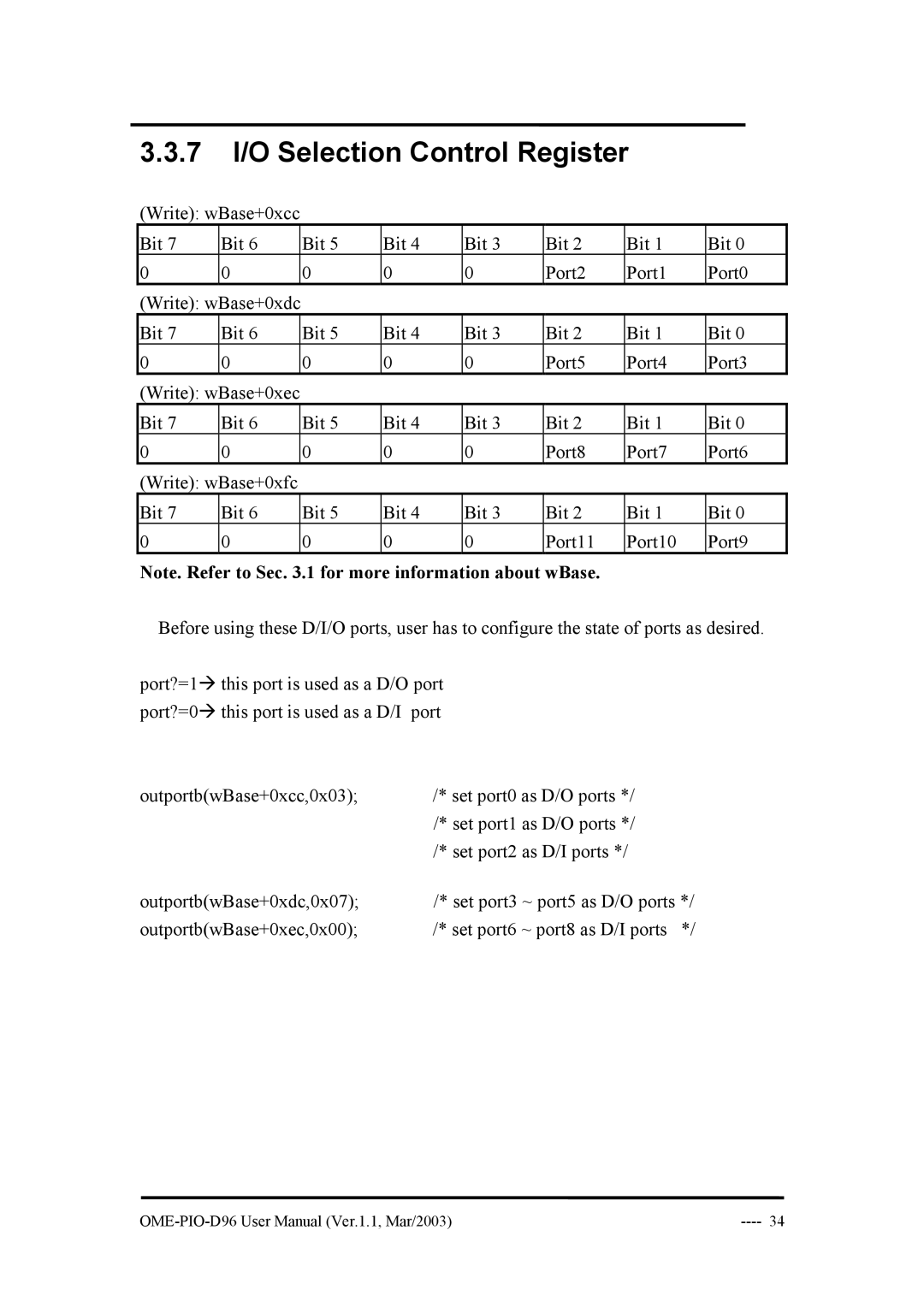
3.3.7I/O Selection Control Register
(Write): wBase+0xcc
Bit 7 | Bit 6 | Bit 5 | Bit 4 | Bit 3 | Bit 2 | Bit 1 | Bit 0 |
0 | 0 | 0 | 0 | 0 | Port2 | Port1 | Port0 |
(Write): wBase+0xdc |
|
|
|
|
|
| |
Bit 7 | Bit 6 | Bit 5 | Bit 4 | Bit 3 | Bit 2 | Bit 1 | Bit 0 |
0 | 0 | 0 | 0 | 0 | Port5 | Port4 | Port3 |
(Write): wBase+0xec |
|
|
|
|
|
| |
Bit 7 | Bit 6 | Bit 5 | Bit 4 | Bit 3 | Bit 2 | Bit 1 | Bit 0 |
0 | 0 | 0 | 0 | 0 | Port8 | Port7 | Port6 |
(Write): wBase+0xfc |
|
|
|
|
|
| |
Bit 7 | Bit 6 | Bit 5 | Bit 4 | Bit 3 | Bit 2 | Bit 1 | Bit 0 |
0 | 0 | 0 | 0 | 0 | Port11 | Port10 | Port9 |
Note. Refer to Sec. 3.1 for more information about wBase.
Before using these D/I/O ports, user has to configure the state of ports as desired.
port?=1Æ this port is used as a D/O port port?=0Æ this port is used as a D/I port
outportb(wBase+0xcc,0x03); | /* set port0 as D/O ports */ |
| /* set port1 as D/O ports */ |
| /* set port2 as D/I ports */ |
outportb(wBase+0xdc,0x07); | /* set port3 ~ port5 as D/O ports */ |
outportb(wBase+0xec,0x00); | /* set port6 ~ port8 as D/I ports */ |
